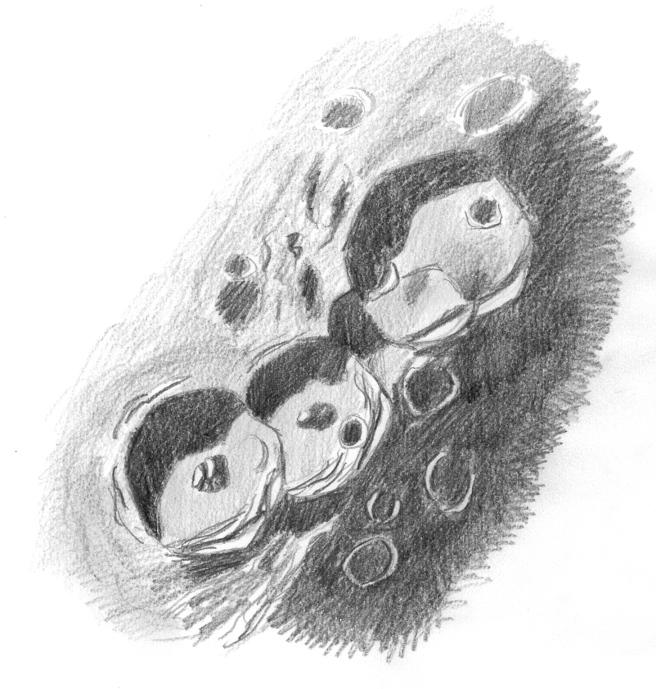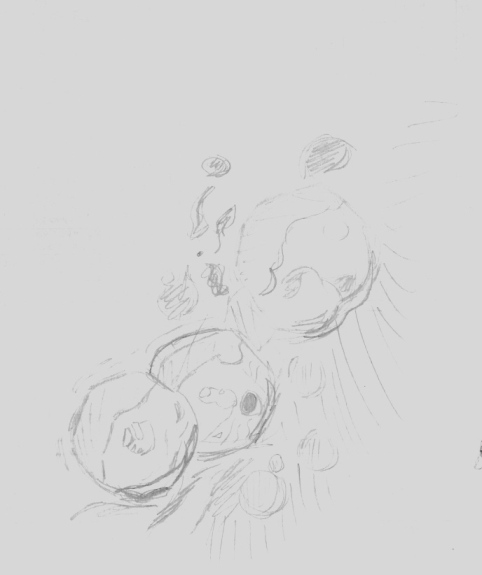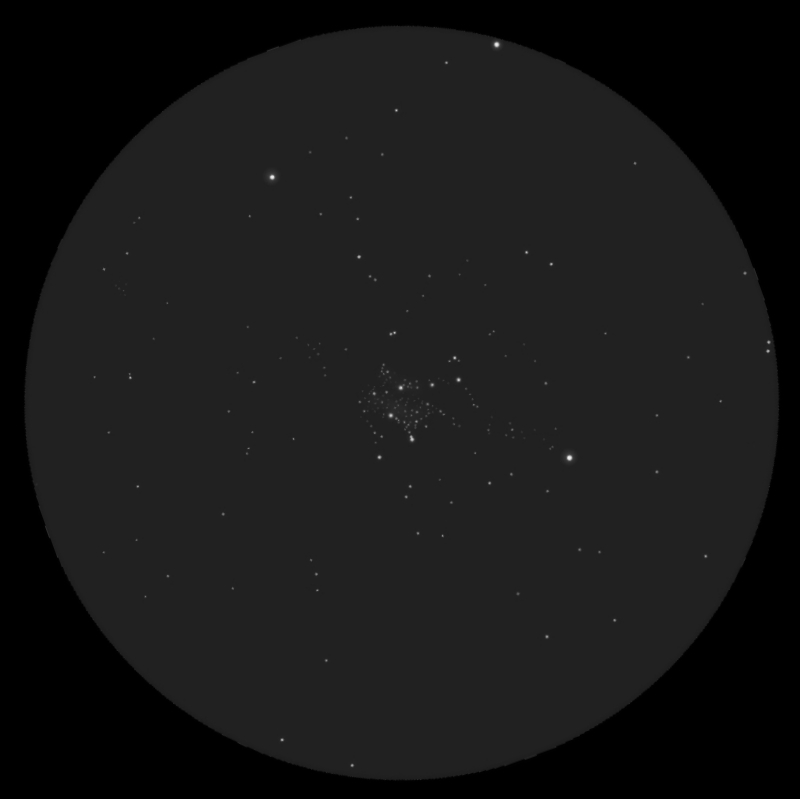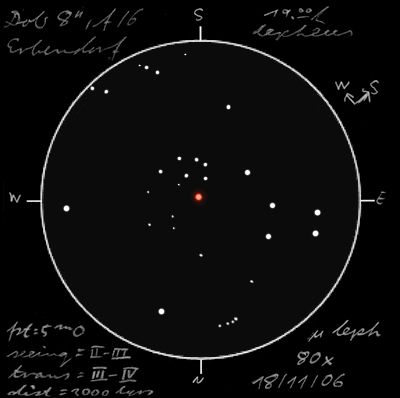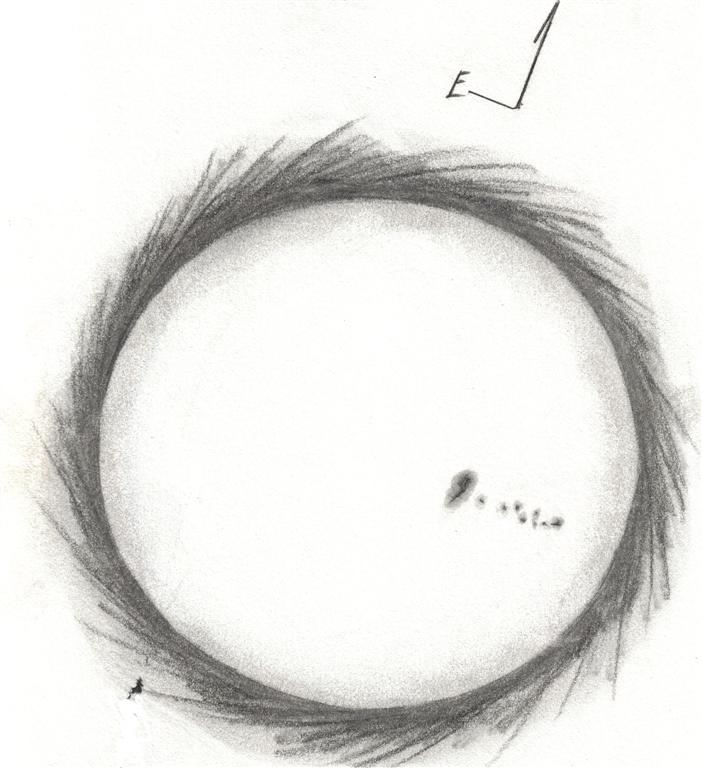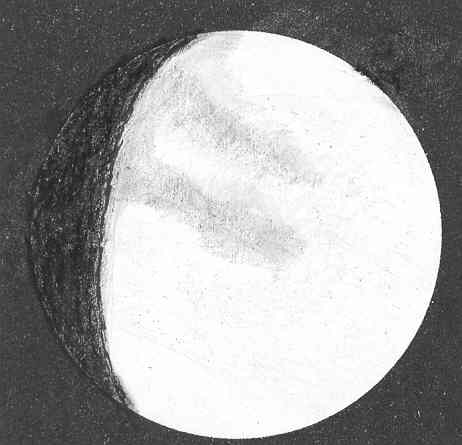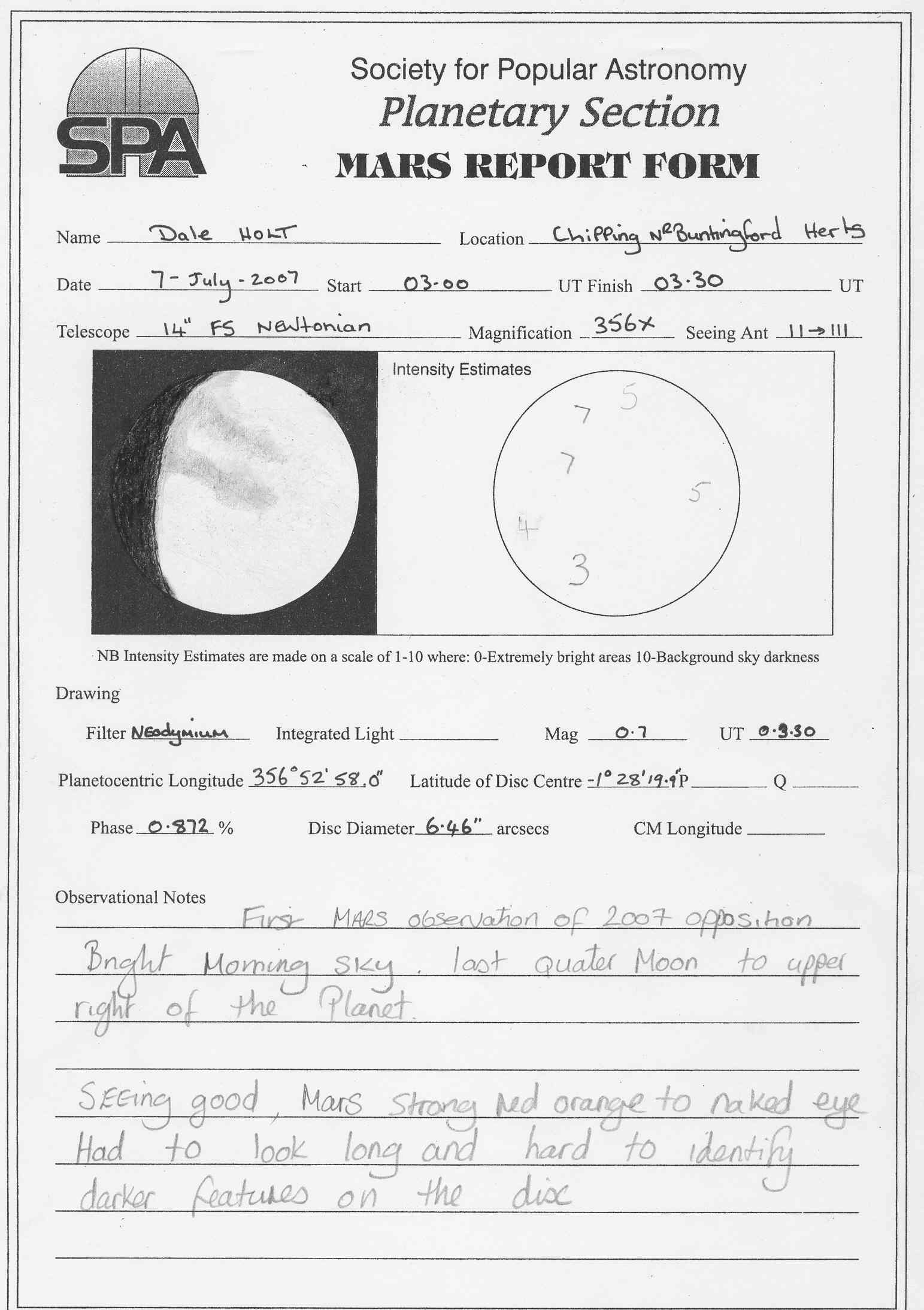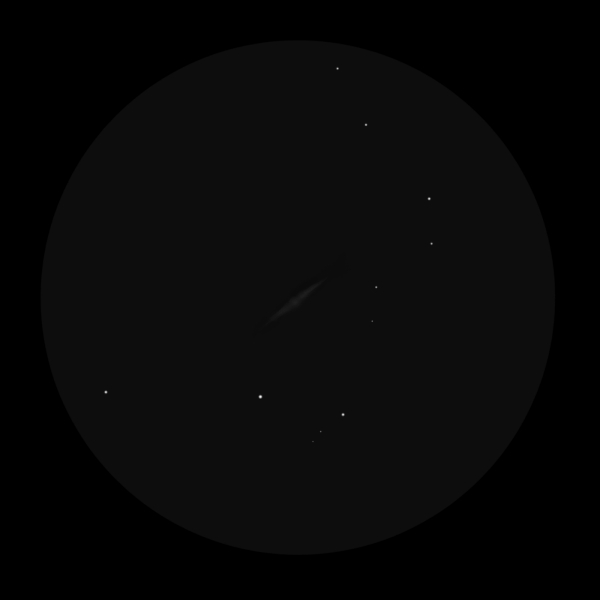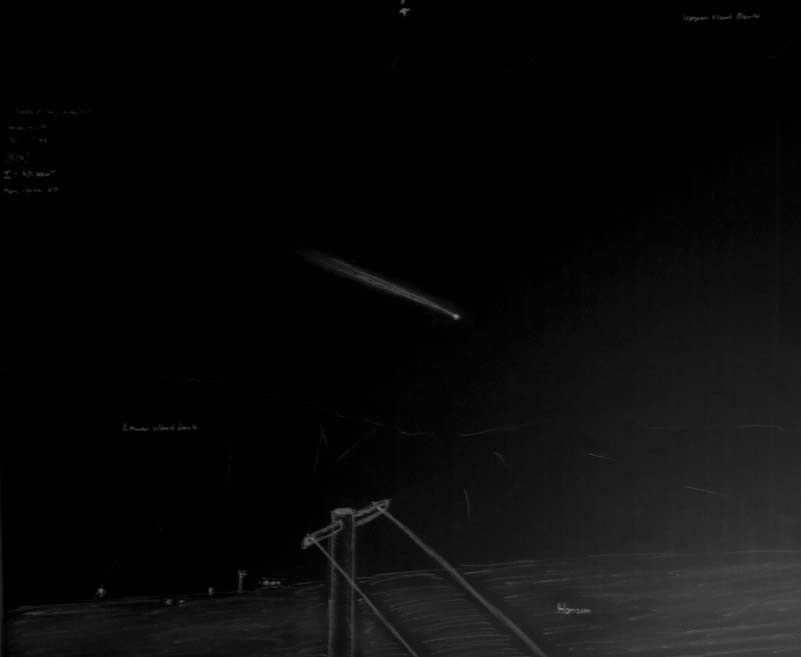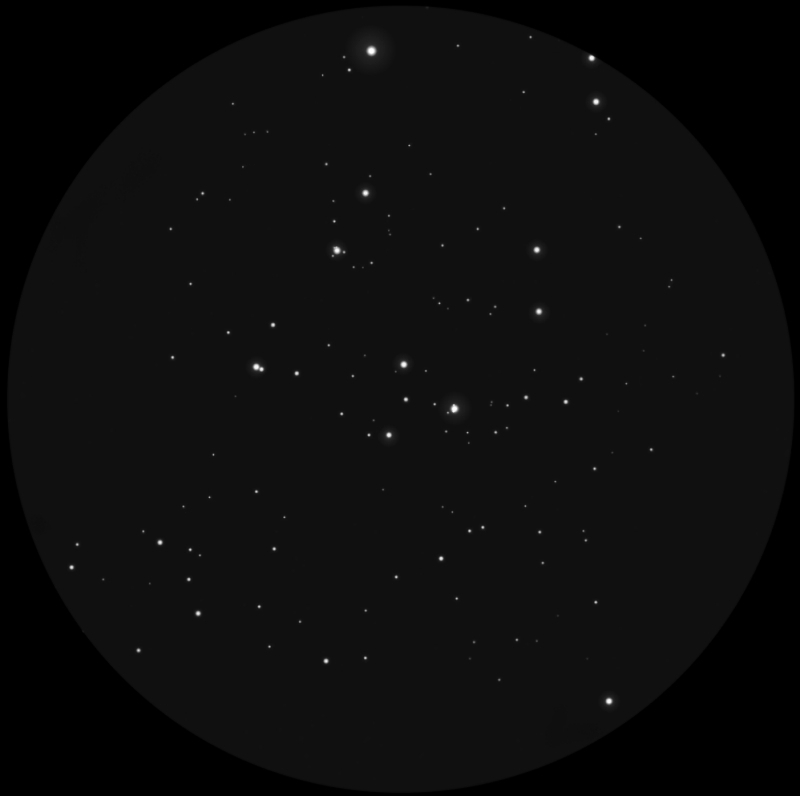Hello friends!!
I have been busy a few months but I am back again :- )
I send you a sketch that I did last year showing the Zodiacal Light. It was
the first time I saw it in so good conditions and very clear.
The weather was perfect, transparency, very very clear skies. The Moon was
next to the plain horizon, thin as a sickle, the pyramid of light was
inclining towards the left side, becoming closer as it was climbing up to
the constellation of Geminis and Cancer. Incredibly luminous it was
contrasting against the black sky.
It is a naked eye sketch showing some trees on the horizon and the moon.
Date: April 29 (2006)
After the sunset looking to the west.
I hope you like it.
Leonor



